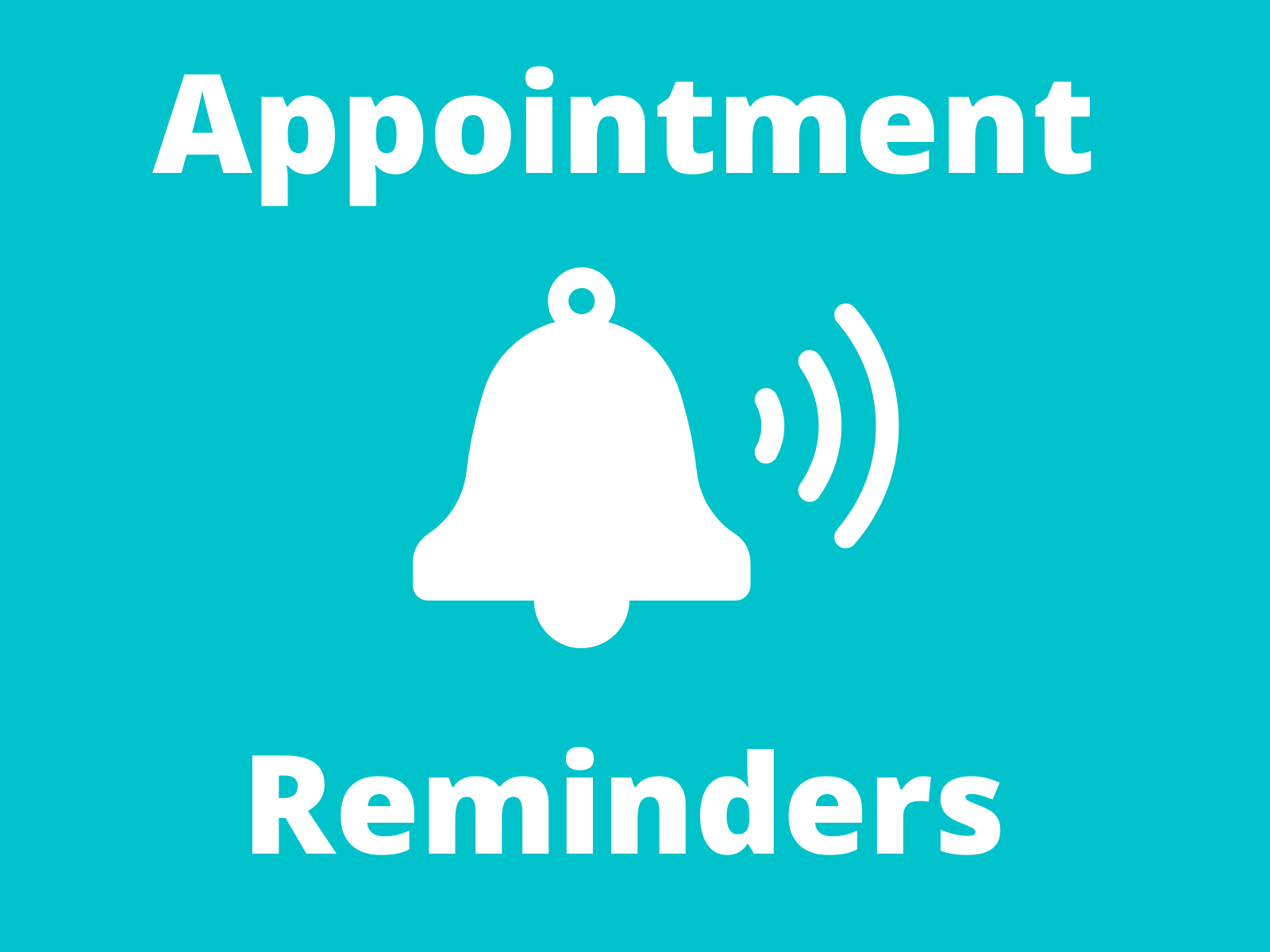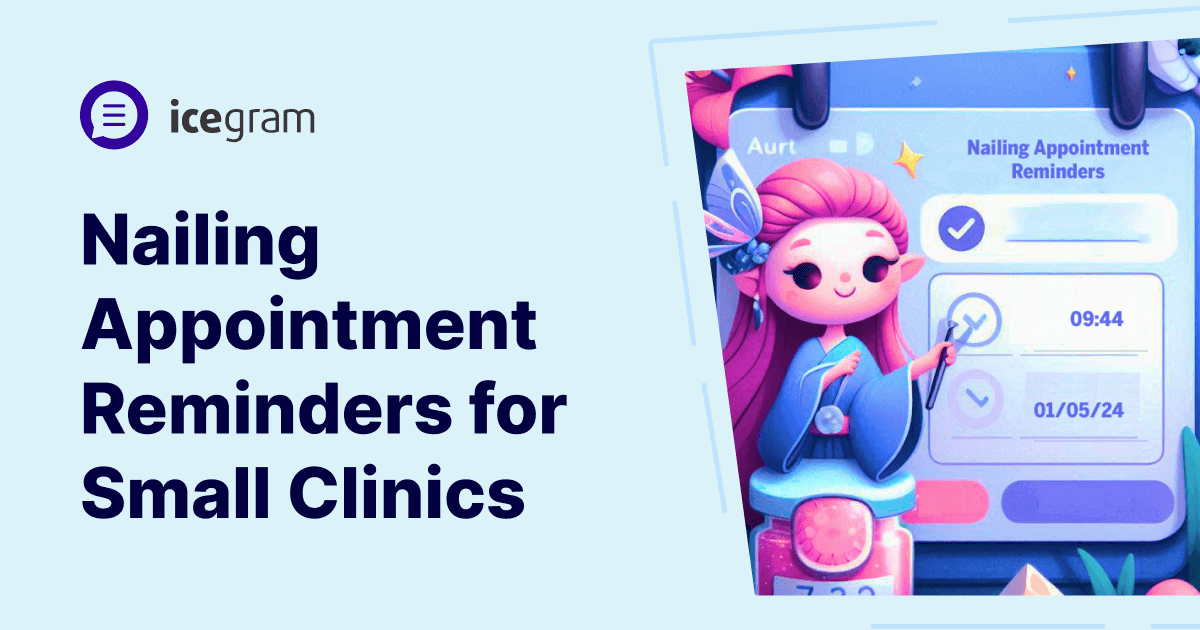Missed appointments, lost revenue and delayed patient care are some of the worst nightmares for small clinics.
Engagement is the backbone of a thriving modern-day business. And similarly, the healthcare sector can certainly not miss out on that as well.
Patients might miss appointments because they may forget, might not be notified, or could simply be busy! There is a lot that could get in the way!
Read on to learn how to use appointment reminders to get the engagement ball rolling!
How to set appointment reminders?

Patient no-shows (i.e. patients not showing up for the appointment) may occur due to multiple reasons.
While this activity is behind the scenes, if this facility dwindles, it can impact multiple dimensions of a small clinic’s functioning.
Regardless of the reasons, it can be harmful to your business, leading to mounting overhead costs such as rentals, employee costs, utilities, insurance, or any equipment or supplies required for specific appointments. This situation can also worsen if there is no upfront payment involved. As per a PubMed research, Patient no-shows can result in a 14% loss of revenue, and this loss can be substantial to small clinics.
Besides, the time factor must also be considered. This will include the time taken to set the appointment and organize it. This can affect staff and customer retention, customer service, and the quality of healthcare, thereby affecting overall efficiency.
While doctors save lives, it is crucial to ensure that the admin work isn’t compromised.
Appointment reminders showcase that your clinic cares about them. Attracting and retaining patients with digital convenience makes it easy for patients to manage and pursue good health. Appointment reminders show that the clinics are mindful of their patient’s health records and progress. However, simply dropping them a line about their appointment might not work! For better engagement, you must also include vital details about the appointment.
This includes:
- The address of the facility
- The appointment timings
- What is the process of rescheduling the appointment
- Any prior preparations for the appointment (if required)
For patients who come unprepared and unaware of the procedure, it can lead to additional expenses to your clinic when rescheduled.
Reminders without these details can confuse your subscribers or even annoy them. Along with the details, ensure to center these reminders around building a strong customer bond and enhancing engagements.
How can you improve appointment reminders for patient engagement?
Start with inspecting the current scenario
Zooming in on the current scenario can help you assess the areas of improvement.
For example, what about your follow-up emails? They must be meaningful and actionable to engage your patients positively. Considering how the email will help the patients will help you make better decisions about your healthcare process, appointment readiness and ensuring prompt patient care. Getting these aspects right also helps you engage beyond emails.
For better patient engagement, clinics can also send out treatment options, follow-up instructions, and chronic care medical strategies. This gives patients the choices for better decision-making and following a healthy life.
Automation is the way to go!
Wouldn’t your staff be overwhelmed with constant requests and by sending multiple email reminders?
Moreover, things can get much more tricky because of fewer staff in small clinics. This can lead to bad experiences for your staff as well as the patients. By doing things manually, your patients might feel disconnected.
Executing tasks manually can be error-prone, hence, switching from a manual to an automated procedure will be much more feasible. Moreover, automation would also cut down on the need for additional staff. Additionally, these messages are also easily customizable for one-time as well as recurring communications.
Automatic email notifications can help you with one-time as well as recurring communications, required for confirming, canceling, and rescheduling appointments.
Sending actionable steps
What if your patients want to reschedule your appointment and don’t know how?
This process is going to be much more difficult if it’s based on a one-way communication style. This will cause the reminders to be sent in vain. While ensuring personalization and relevance, keeping your patients engaged with actionable steps is a crucial practice.
Actionable appointment reminders give your patients the power to confirm, cancel, or reschedule the appointment. If you don’t wish to lengthen the content, you can simply add a “click yes to confirm’ button. This will give you a clearer idea about the availability of the patient. Besides being direct, you can customize the email for better clarity and to avoid confusion. This allows for filling in empty spots with ease and there is no revenue loss through patients.
As an extra value addition, you can also add healthcare news, research, discoveries, interesting statistics, and quick tips relevant to the patient’s medical history. This makes your appointment a reminder to go the extra mile and talk about topics that can make your patient’s lives better.
Make the most of appointment reminders
Post the pandemic, clinics have been sticking to their safety protocols especially when they have multiple patients visiting them at once.
Appointment reminders can be a great medium to communicate what to expect at the facility and the rules to follow before and post the appointment. This is effective to ensure that they are not unnecessarily crowding other facilities and are not going around in circles and wasting time while asking for directions and instructions.
This is an indirect positive effect of appointment reminders that can improve patient satisfaction. The tactic works by not keeping the patients on the waiting list, especially patients who wish to be cured as soon as possible.
Best practices to set appointment reminders for patient engagement
Make it personal
Email marketing in healthcare is the last place where you’d want to generalize your emails.
Every medical history is bound to be different. Sending each patient the same email can be erroneous, and confusing, and may even hurt the reputation of your clinic. Hence, it’s better to refrain from generic templates or canned responses.
As per each patient appointment, you can send reminders 24 hours before it, or an hour before it. You can likewise create and automate a list of reminders for your patients.
Use your patient’s name and other details to personalize the message even further.
Moreover, sending custom emails to specific segments can also snowball patient engagement.
Make the message easy and intuitive
Your patients could be in a hurry or simply dealing with their medical condition. There are many more reasons why your email could go unnoticed. Hence, you’d want your patients to respond as soon as possible.
To make that happen, use a clear message with simple and intuitive CTAs. You must make it easy for the patients to participate in your conversations for better engagement. However, to make the communication comprehensive and exclusive, consider accessibility for your patients as per their health conditions.
It is vital to note that participation must be ensured regardless of age, disabilities, devices, preferences and other factors.
Comprehensive reminder services
The reminder services must support pre and post-appointment services. This improves patient awareness and adherence to the do’s and don’ts’ of the procedure. Staff can also make the process more convenient and engaging by having the patients fill in the form, or questionnaire, or confirm pre-care information.
These services automate communication and ensure that both sides are updated in case of changes in plans.
Likewise, comprehensive services make the information available to the staff for a clearer picture of the appointments. This includes factors such as times, dates, status, and more. This information is available to the staff right away, allowing the clinic staff to take prompt action in case of rescheduling.
Avoid emojis
I agree that emojis are a great way to infuse some humor and personality.
However, when reaching out to your patients, it’s best to refrain from a casual approach. Moreover, emojis can also significantly reduce the character limit. This can restrict you from clearly communicating the appointment details to your audience.
If important, ensure that you only add emojis that are relevant and are not hurtful, or irrelevant to your patients.
Ask for feedback
To roll the engagement ball further, you must also ask for likes, shares, or reviews from your patients on social media. This will help you to establish trust on social media.
Clinics can ask for feedback after treatments and appointments.
Avoid capitalization
As we are looking for a friendly language, it is better to avoid unnecessary capitalization. Writing in the general sentence case makes it look friendly. On the flip side, capitalization can make your phrases appear as shouting.
If the use of capitalization is indispensable, you can keep its use to a minimum.
Prompt responses
We’d all agree that nothing is as important as your health! And when you are waiting for responses from your healthcare provider, it’s best to hear from them as soon as possible!
And that’s why to use prompt responses to avoid delays, discrepancies, or confusion.
Conclusion
Engaging patient reminders can make processes smoother while creating a positive bond with your patients. As for small clinics with limited resources, this tool can be substantially helpful.
Want patients to sign up for these email appointment reminders? Consider collecting emails in the waiting room, during online appointments, or scheduling.
However, clinics must also be wary of regulations such as HIPAA, TCPA and CAN-SPAM.
These regulations can protect the patient’s privacy and can assist with exceptions for normal patient consent rules.
Technology is all around us, what’s important is how we make use of it.
There’s something else too that can make it easy for you to reach out to your patients!
Check out Icegram Express which can automate newsletters and marketing with utmost precision.
Change your email marketing game now!

